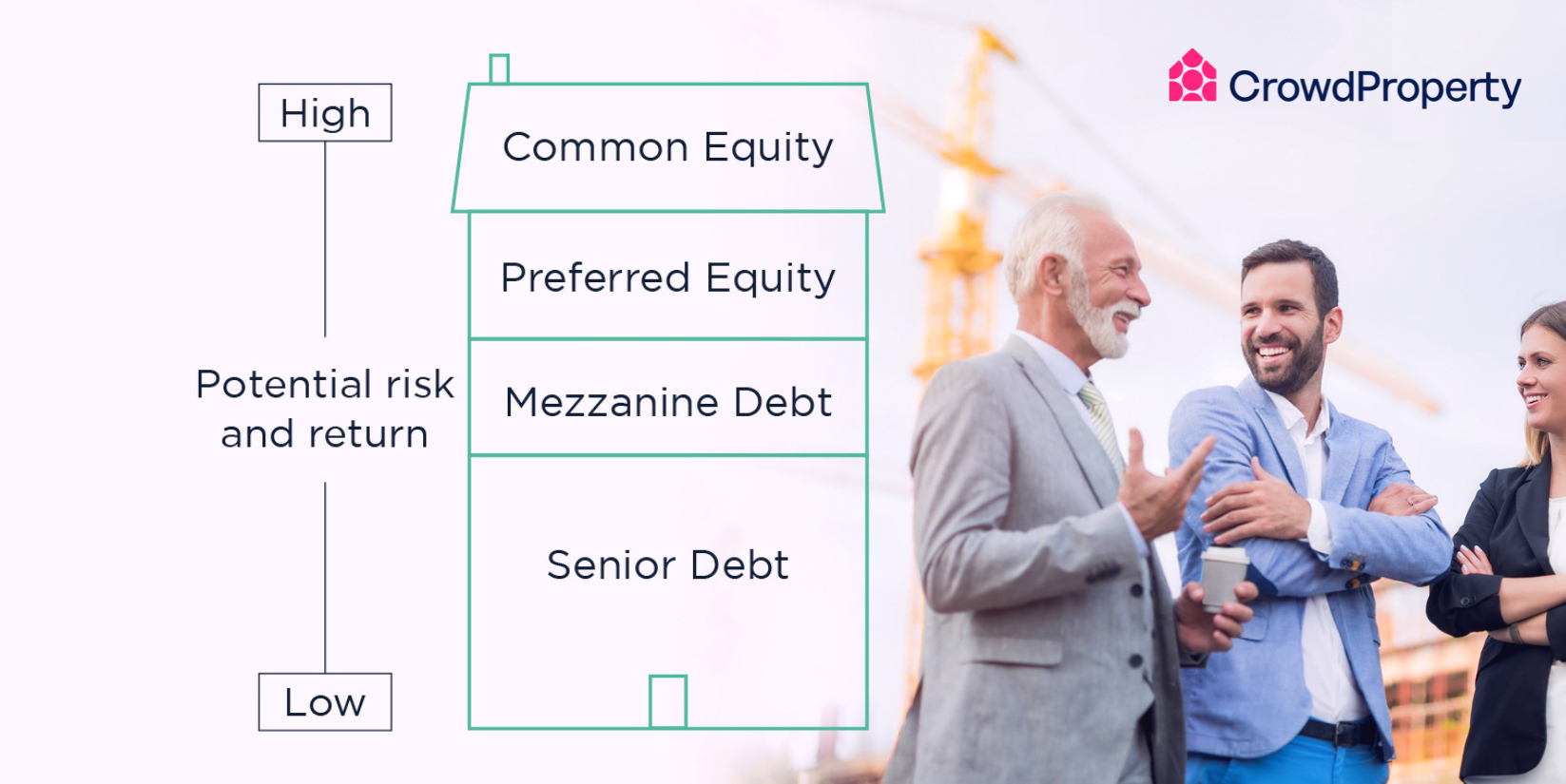
The capital stack is the structure of all the funding raised for a development project, including common equity provided by developers as well as the various forms of debt sourced from different lenders.
The capital stack for a property development has a layered structure, and is stacked from bottom to top in order of security and priority of payment.
Investments at the bottom of the stack are the last in and the first to receive payment, making them the most secure. Investments at the top stack are the first in but the last to receive payments, which makes them the riskiest.
As with all investments, there is a positive relationship between levels of risk and returns on offer — the higher the risk the higher the level of reward.
First mortgage security
At the very base of the capital stack are first mortgage secured loans, sometimes known as senior loans, which usually comprise the majority of the funding amount. This is the most secure form of investment in a project, as it receives first priority when it comes to repayment.
They are usually the last form of funding that enters a deal, so they are also the first to make an exit. This is the type of lending we offer at CrowdProperty — our borrowers (developers) need to pay the CrowdProperty loan back before settling any other debt, meaning our investors receive their capital and interest back before other lenders receive their returns.
Common equity
On the opposite end of the stack is common equity — the highest risk investment that also provides the highest returns.
This is usually where the developers themselves provide funds in the form of their own capital. At CrowdProperty we always like to see developers who have invested their own capital and have ‘skin in the game’. While common equity provides comparatively high returns, it also ranks last when it comes to the order of payments. Investors in common equity are the first in with funds, but also the last to make an exit.
Mezzanine debt and preferred equity
Between the top and the base of the stack are intermediate forms of funding that can include preferred equity and mezzanine debt. These rank in between common equity and senior debt when it comes to both risk and returns.
When it comes to order of payments, preferred equity and mezzanine debt is paid after senior loans and first mortgages, but before common equity. Mezzanine debt is also known as second mortgage as it refers to a subordinated debt piece that is usually secured by a second ranking registered mortgage over the relevant development property. This can be helpful for a developer seeking a higher loan-to-value ratio (LVR) than the first mortgage lender is prepared to offer.
At CrowdProperty we typically lend up to 70% loan value of gross realisation value (GRV) or end sales value. As a consequence, a developer is usually willing to offer higher returns to investors than what he or she pays for senior loans, but less than those for common equity.
The key to understanding the capital stack is knowing that it ranks different forms of funding in terms of priority of payment, and that there is a positive relationship between the risk of an investment and the reward that it offers.
